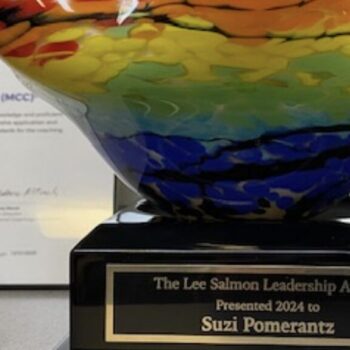
Reframing as an Essential Coaching Strategy and Tool
First-order thinking involves gradual assessment and reassessing of a situation, while first-order change involves gradual evolutionary alteration in some system. Second-order thinking involves a major, rapid shift—such as we will find in the engagement of re-framing processes. Second-order change, in turn, involves abrupt revolutionary alteration. Typically, the changes we make in any social institution or in our own individual lives are either evolutionary or revolutionary in nature. While the end of a first-order, evolutionary change may represent a qualitative difference from the beginning, each change that is made will be minimal and may represent no qualitative difference from the immediately preceding change. The change can be considered transitional rather than transformational — in Thomas Kuhn’s terms, a part of “normal science” rather than a “paradigm shift”.
Thus, the change is likely to be more acceptable and less stressful for a greater number of people than would be the case if the change were large and abrupt. This incremental strategy of personal and social change holds one major disadvantage. In the slow, progressive movement toward some change goal, the sense of direction and motivation to be found at the beginning of the change initiative may be lost. As a result, the change effort may simply fade away before the goal is attained (“not with a bang, but a whimper”) or the change effort may become misguided and end at a quite different point from that first intended.
Second-order, revolutionary change represents a profound transformation in the person or institution—a paradigm shift. We must keep this in mind when considering the powerful tools of reframing. In recalling the opening case of Mendelsohn, we might wonder if the bigot will knock Mendelsohn to the ground (or do something even more violent) after the term “Swine” has been placed back on him. The shift in one’s consideration of reality—as portrayed on the solipsism T-shirt—might not be so funny when the barracking of one’s own reality from external confirmation is found in someone who is schizophrenic or in someone embracing as “insane” conspiracy theory (Weitz and Bergquist, 2022).
Because re-thinking is disruptive and abrupt, the motivation to think slowly in a new way must be great, for it is much easier and less energy-consuming to rely on habitual, fast thinking than to engage in slow, self-critical thinking. Similarly, the motivation needed to begin a second-order change and a sense of the direction that the change should take must not be lost during the course of the change. Levels of stress, and resistance to this transformational change will be great. Typically, power and manipulation are required to bring about a re-thinking of a challenging situation or to bring about second-order change. Alternatively, one can adopt a strategy that involves careful movement between first and second order change — between evolution and revolution. One can also make occasional and appropriate use of reframing as second-order process.
- Posted by William Bergquist
- On May 10, 2024
- 0 Comment


Leave Reply